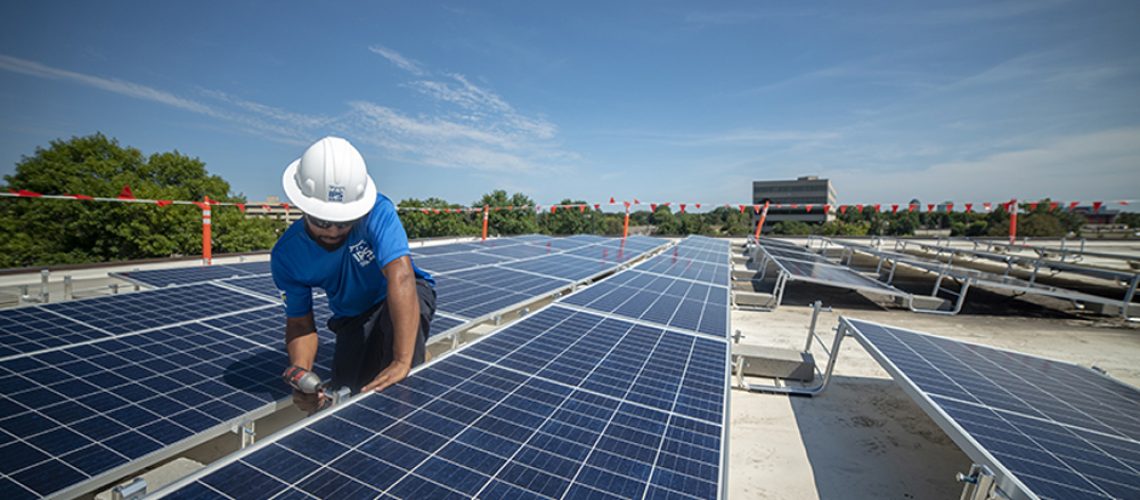Annual rooftop solar installations more than double when each homeowner’s long-term “profit” on a system increases from zero to $1,000, a study found. Based partly on that study, a Minnesota utility must now evaluate distributed solar incentives as a means to save all customers money.
Annual rooftop solar installations more than double from six systems per thousand households, when households break even on a rooftop solar investment, to 14 systems per thousand households, when adding rooftop solar earns them a net present value, or “profit,” of $1,000 over 20 years, a study has estimated. The numbers of systems are based on an average residential rooftop PV system size of 5 kW.
The rooftop solar adoption model was based on solar installation data from California, Massachusetts, Arizona, Germany and Japan from 2005 to 2016. A study presenting the model was published in the journal Renewable Energy.
The Sierra Club used the model, along with other arguments, to persuade Minnesota regulators to require utility Xcel Energy to evaluate, in its next resource plan, incentivizing distributed solar to substitute for more costly types of generation, thereby saving all customers money.
50-state model
The Institute for Local Self-Reliance (ILSR) launched the work with a 50-state model that identifies the likely solar adoption rate in each state, based on state-specific data including solar resources, or insolation, and compensation for distributed solar generation. The spreadsheet model has 50 sheets, one for each state.
The model can be adjusted based on policy change, said John Farrell, an ILSR co-director. By focusing the model on the number of households in Xcel Energy’s service area, and the compensation for solar power sent to the grid, he said ILSR found that Xcel Energy’s forecasts “seemed very low,” at just 276 MW of all types of distributed solar over 15 years. In comparison, ILSR’s model, which counted only residential solar and not other types of distributed solar, projected at least 550 MW of residential solar over 15 years.
ILSR then worked to “figure out how much more solar could you get if the utility were to incentivize local solar at a price point that is lower than they would pay for other resources,” Farrell said, in a webinar hosted by the Sierra Club.
ILSR considered incentive levels ranging from one cent to four cents per kWh of solar generation, beyond existing compensation, over a 15-year period.
Near-term victory
The Sierra Club then challenged, in formal comments to Minnesota regulators, the utility’s treatment of small-scale solar as more expensive than large-scale solar. Although large-scale solar has lower capital costs, the group pointed out that individual ratepayers pay most of the capital costs of small-scale solar, “so it’s not reasonable” for the utility to model those costs as being paid by the utility and its ratepayers generally, said Laurie Williams, a senior attorney with the Sierra Club.
Distributed solar also avoids the need for transmission lines, Williams said, and transmission is “very constrained” in the upper Midwest.
Challenging Xcel Energy’s assumption that “they have no control over the level of distributed solar that would be adopted,” Williams said that utility programs, such as rebates, “can incentivize customers.”
The Sierra Club then “made many corrections to Xcel’s modeling assumptions,” Williams said, and conducted its own modeling, including the option for financial incentives to increase distributed solar adoption, and recommending an alternative resource plan that it said would save all consumers money.
Williams claimed a near-term win resulting from its work and that of four other groups, as the Minnesota Public Utilities Commission ordered Xcel Energy, in its next resource plan, to model distributed solar as a resource that can be incentivized, not as a fixed-quantity resource, and to “address” the costs of distributed solar borne by the utility, versus the costs borne by the customer. The four other groups were Vote Solar, ILSR, Cooperative Energy Futures and Environmental Law and Policy Center, which jointly filed separate formal comments with regulators.
The Sierra Club modeled Xcel Energy as having the ability to categorize owners of rooftops according to their willingness to install solar, and to offer the lowest incentives to those most willing to add solar, and the highest incentives to those least willing to do so.
Offering different incentive levels to different customers “could have proven to be a difficult program to administer,” said Will Kenworthy, Midwest regulatory director with Vote Solar, on the webinar. “So one of the lessons we learned during the back and forth with the utility and other stakeholders during the proceeding is that it may make sense to model a single incentive level in each given year.”
The research study used by ILSR is titled “Empirical development of parsimonious model for international diffusion of residential solar.” The study is available for free as an “open manuscript” at this page.






